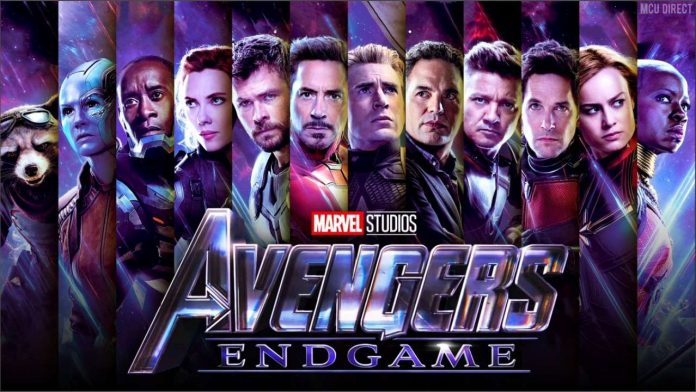By Surendra Bhatia
No Space For ‘Regular’ Films
Martin Scorsese and Steven Spielberg, veteran and revered Hollywood filmmakers, have flagged contrasting issues which highlight much the same thing. Spielberg wants to protect the sanctity of watching films in cinemas and is attempting to guard it against marauding video streaming services like Netflix and Amazon Prime, by denying their films the validation of awards, while Scorsese is worried that ‘regular’ films are being edged out of cinemas by blockbusters. Both, apparently, are concerned that theatres face, in the near future, a transformational change that would be deleterious to cinema, in general.
Scorsese has recently expressed fears that the kind of mid-budget, story-centric films he makes may not find screen time anymore in cinemas. When blockbusters like Avengers: Endgame come along, they flood cinemas like tidal waves, driving almost every other film out to the fringes, starving them of screen time, sometimes for over three-four weeks. With screen time being monopolised by blockbusters, the space for ‘regular’ films is getting constricted. In such a case, what does the future hold for cinema?
Over the last couple of decades, the commercial world of cinema has firmly locked in with big-budget fares. Hollywood already has so many mammoth-budget franchise series and their spin-offs that it often seems from a distance, it makes no other kind of films.
Just a cursory look at Hollywood films released in 2018 reveals an overwhelming line-up of franchise films, many of the superhero/supernatural genres. Just check it out: Avengers: Infinity War, Black Panther, Deadpool 2, Solo: A Star Wars Story, Hereditary, Incredibles 2, Jurassic World: Fallen Kingdom, Sicario 2: Soldado, Mission: Impossible – Fallout, Aquaman, Venom, Ant-Man And The Wasp, Spider-Man: Into The Spider-Verse, Tomb Raider, Creed II, Hotel Transylvania 3: Summer Vacation, Fantastic Beasts: The Crimes Of Grindelwald, Mamma Mia! Here We Go Again, Fifty Shades Freed, Ocean’s 8, Mary Poppins Returns, Johnny English Strikes Again, and there must be a few more not listed here. But even then, the above films add up to 24, which is like a franchise film releasing every second week! And these big-budget, heavily promoted films don’t obstruct the release and fate of regular films for just that one week but also the week prior and after. Avengers: Endgame, for instance, must have scorched all the other films releasing in the three-four weeks following its opening. So, when Scorsese says that ‘regular’ films are being edged out, he is expressing not just his own concerns but the anxiety of all filmmakers who want to tell a stand-alone story, without the trappings of superheroes or franchises. They might soon find that cinemas just can’t offer them enough screen time.
Of course, there were a few stand-alone movies like Bohemian Rhapsody, A Star is Born, and The Favourite which also released in 2018 but these, perhaps, fall into the award-winning, aim-for-Oscars category, which carries its own rationale, and usually shuns the blockbuster route. Every filmmaker wants to make money but these three were made to go for glory, not mere fortune. Besides, films that are aimed at Oscars usually don’t fall in the blockbuster category, with honourable exceptions, of course.
All trends in cinema are related not to creativity or artistic expression or to the reality on the ground but to the box-office. Any film that makes a killing at the box-office pushes other filmmakers to cash in on it. And, if a few more similar films click, it becomes a trend. It’s always about what works with audiences. If tomorrow, documentary films start dominating the box-office and pulling in a billion dollars regularly, by God, every filmmaker will line up at doorsteps of documentary writers, trying to make that billion-dollar documentary. A few intrepid filmmakers might try out something different in the hope that it might start a trend but most are more than happy jumping on to bandwagons that are racing most swiftly to the box-office finish line. It’s a cliché but it fits in perfectly here: ‘It’s all about the money, stupid’.
Today, Hollywood has conquered the world, especially China which is its biggest market, largely – some say, solely – because of its superhero genre. Franchise films like Mission: Impossible and the Avengers series ferret out large fortunes in China – and the rest of the world, too. But because China is such a huge market, Hollywood is peddling films that are tech-heavy and simplistic in plot to cater to its film-crazy population. There have been cases of some action films flopping in North American markets but doing so well in China that flops crossed into the hit category. It may be a stretch but it does seem like China’s box-office collections have spurred Hollywood down the superhero/franchise film route. The takings have been stupendous.
This suits Hollywood perfectly. It goes where the money is. Also, American writers have such a firm grip on the superhero genre that they can outbeat and outlast any other set of writers anywhere else in the world. America’s comic strip culture – which is probably the only indigenous culture it can boast of – is more than a century old, and all living American writers have grown up reading Superman, Batman, Spider-Man comics. So, to get them to churn out superhero films is like asking an Italian to knead the dough for spaghetti. It comes naturally.
However, the worrying part is, according to Scorsese, the exclusion of normal films from reaching audiences fully. Spielberg’s worry is that if films screened largely on live streaming sites like Netflix garner respectability, the culture of making ‘regular’ films for cinemas will become redundant. If the fears of both – Scorsese and Spielberg – are not totally off, the world of cinema could soon see the trend of big-budget films dominating the theatrical box-office to the exclusion of regular films, which would, naturally, shift to Netflix etc. And that seems very much on the cards.
Scorsese, for instance, experienced this first-hand. He wanted to make The Irishman, continuation of his series on America’s gangsters of the early decades of the last century. He rounded up his venerable, tried-and-tested cast of Robert De Niro, Al Pacino and Joe Pesci, and tried peddling the project around Hollywood. Even at the projected cost of only $125 million, and a Scorsese film at that, no one was willing to back it. Finally, the only buyer left in the market was Netflix. It expressed willingness to put up the finance but only on a condition that the Scorsese film would not, probably, see the light in cinemas. The famed director, one of the best Hollywood has produced, reconciled himself to it. His logic was that he wanted to make the film… if it didn’t release in cinemas and debuted only on Netflix, so be it. It would still be his film and the way he wanted to make it. Yes, The Irishman (a potential Oscars’ contender) might release in cinemas for a few weeks but its major market would be found among subscribers of Netflix, not in cinema halls.
This is the reality that has shaken up Spielberg and Scorsese. They see the future divide between films releasing in cinemas (almost exclusively big films) and regular films finding space only on streaming sites. Much as they might deplore the idea, the box-office collections might create the necessity of reserving cinemas for big-budget fares, leaving little space for regular films.
While that may be true to a great extent, and might become a reality in the coming years, there’s another factor that could come into play and cause disruption to such theories. The way technology is taking over our lives and dictating lifestyles, how long will it be before home theatres become almost as good as mini cinemas? Even today, it is quite enjoyable to watch a film on the miniature screen of a cell phone; the cell phone can be connected to a huge TV screen and the same film then gets a wider format. Now, to go a step further: what if the cell phone is able to project the film on a wall, almost as large as a preview cinema screen? Then all bets will be off. Big films need large screens to give ample expression to their canvas; regular films are more intimate and do not suffer much when viewed on smaller screens, like a cell phone or TV screen… but if almost all households have that blank white wall, arguments about differences in canvasses of silver screen or idiot box or cell phone will fly out of the window. That really seems the more likely future scenario that Scorsese and Spielberg have not cared to look at. Technology advancements in communications have conspired to isolate individuals and promote connections through devices. Currently, in some more urbanised societies, family members staying in the same house – usually a large one – chat with each other on WhatsApp rather than walk down to each other’s rooms; messaging has become more ubiquitous than talking or physical interaction. In such a world, isn’t it likely that people would need cinema halls less and less, or visit one, only on special occasions?
The future is unpredictable and no one really knows where we will be five years from now. The fate of cinema shall be no different. It is, as they say of Planet Earth, up in the air, and since prayers don’t help much, all one can do is quietly watch the future unfold.
Language Of Politics
It should surprise nobody but sometimes it does: Bollywood films are actually quite popular in South India, and Hindi film stars like Amitabh Bachchan, Aamir Khan, Shah Rukh et al have a strong following among the Tamilians, the Malayalees, and the Telugu- and Tulu-speaking population. Occasionally, there is talk about opposition to Hindi in Southern states but that doesn’t see much traction with the people per se. They watch Hindi films, they sing Hindi film songs (even if the actual meaning of lyrics remains a bit of a mystery) and they understand the language enough to enjoy Bollywood films.
A recent report published in a national daily mentioned that Sholay (Hindi version) had run in Madras for over a year, and Ek Duuje Ke Liye (Hindi version of a super-hit Tamil film), starring then Tamil superstar Kamal Haasan with Rati Agnihotri, ran for over 500 days in Tamil Nadu. Besides, there have been so many South stars, since over five-six decades, who have acted with great success in Hindi films, it is not possible that their legendary fans wouldn’t have seen their Hindi films and picked up enough of the language to understand it, if not speak it.
It is only on a political level that antagonism is created in the South against Hindi. Certain politicians have nurtured this fear against Hindi, that it would be ‘imposed’ on the people in the South, maybe in a way that English hasn’t! Sometimes, this becomes rather annoyingly obvious. Recently, during oath-taking of newly-elected members of Parliament, a Congressman from Kerala took oath in Hindi. This led to jubilant desk-thumping by the ruling BJP party. The Congress chief immediately summoned the Kerala member and admonished him for taking the oath in Hindi. She issued instructions that no other member of her party would use Hindi; they could take the oath only in Malayalam or English.
This is the language of politics in India today, where barricades are put up against political rivals without a thought to what is right or wrong, and how the political stance would affect the country. Unfortunately, this is so across the political spectrum so it is of not much use to castigate just one party. If it did not suit politicians to create differences between regions, communities and languages, India would be a far better, more united country.
Here, at least, Bollywood plays a very positive role. If South Indians have picked up Hindi or, at least, understand it enough while travelling through the other regions of India, it is largely because of Bollywood. The Hindi film industry has been instrumental in creating a soft corner for Hindi in the hearts of non-Hindi-speaking populations throughout the country. This is one thing that has not been acknowledged enough. Maybe now, it’s time, Bollywood gets the brownie points for popularising Hindi across the country.
































